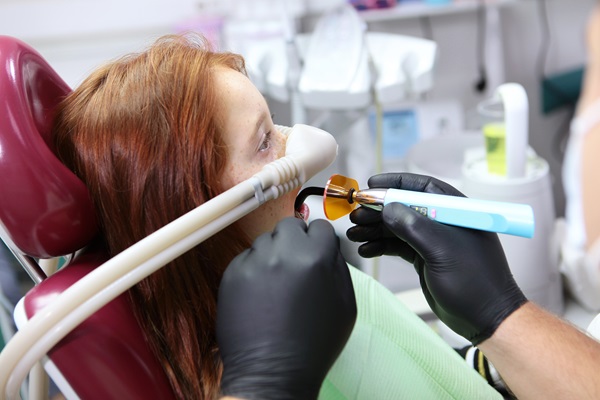Sedation Dentistry: Relaxing in the Dentist’s Chair

If you find yourself scared of visiting the dentist or undergoing dental procedures, you might benefit from sedation dentistry. Most people dealing with dental anxiety would rather endure pain from dental issues instead of meet with the dentist. Sedation dentistry can help you deal with your dental fears and relax in the dentist's chair. The dentist can apply sedation for invasive and simple procedures to ensure that you do not feel anything during the treatments. The application of sedation dentistry depends mainly on the nature of the dental anxiety.
Overview of sedation dentistry
Sedation dentistry uses medication to keep patients relaxed in the dentist's chair for treatment. People often call it sleep dentistry but this is not completely correct. While general anesthesia can be used, patients are usually awake. Dentists use different sedation levels, including:
- Minimal sedation, where the patient is awake but feels relaxed
- Moderate sedation, where the patient is conscious but may be sluggish and have no recollection of the procedure afterward
- Deep sedation, where the patient is hardly conscious but can be awakened if needed
- General anesthesia, where the patient is fully unconscious
Types of sedation options available
The following are the options available in sedation dentistry.
Inhaled minimal sedation
The dentist will administer nitrous oxide, also called laughing gas, together with oxygen via a nose mask attached firmly to the patient's nose. The gas keeps the patient relaxed. The dentist can manage the level of sedation, and the gas's effect often dissipates quickly. With this option, the patient may still be able to go home after dental treatment without assistance.
Oral sedation
The level of this sedation can range between mild to moderate, depending on the dosage administered. Patients will be given a pill for minimal sedation. The drug will be used about an hour ahead of the treatment. It will cause drowsiness but the person will remain awake. The dentist can induce moderate sedation by increasing the dose.
This is usually the most common method used in sedation dentistry. The drug may cause enough drowsiness that the patient actually falls asleep completely during treatment. However, they can be stirred out of sleep with a gentle shake.
IV moderate sedation
This dentist will induce relaxation by administering a sedative drug through the veins. The intravenous application causes the effects of the sedative to kick in almost immediately. It is possible to control the sedation level throughout the procedure.
Deep sedation and general anesthesia
Patients will take medications that will push them into a near unconscious or fully unconscious state during the treatment. Patients who are given this option cannot be woken until the anesthesia drug wears off or is reversed. Patients will usually need to arrange transport home afterward because they may be unable to drive.
Final note
All the sedation dentistry options mentioned also include using a local anesthetic to numb the area where the dentist is working and relieve pain. If you are struggling with dental fears, you can contact the dental office to ask about sedation options that can help you relax in the dentist's chair.
Request an appointment here: https://www.bdentalspa.com or call b Dental Spa at Norwood at (201) 379-9312 for an appointment in our Norwood office.
Check out what others are saying about our dental services on Yelp: Sedation Dentistry in Norwood, NJ.
Related Posts
Searching for a dentist near me often begins with convenience, but the range of services offered should be a top priority. A comprehensive dental practice not only addresses routine care but also provides advanced treatments to support long-term oral health. From preventive visits to restorative and cosmetic procedures, having access to the right services under…
An immediate visit to an emergency dentist becomes necessary when severe tooth pain or infection disrupts your comfort and overall quality of life. This dental professional provides immediate evaluation and relief, particularly when a root canal is required to preserve a damaged or infected tooth. Root canal treatment from an emergency dentist can help alleviate…
Root canal retreatment can prevent infection, pain, or swelling from compromising oral health. A root canal saves a tooth by removing inflamed or infected pulp and sealing internal spaces, but certain situations call for retreatment to restore stability. Recognizing the signs that this treatment may be urgently necessary allows a dental provider to act quickly…
Denture wearers may develop a condition known as stomatitis, an inflammation of the gums and soft tissues underneath dentures. It is most common in people who wear full or partial dentures for long periods, especially those who leave their dentures in while sleeping. Many people do not even realize they have it because it often…
